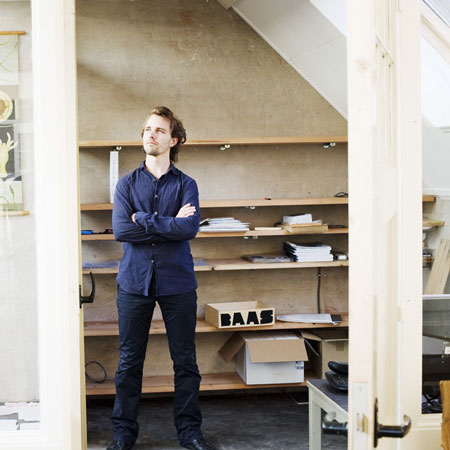
Maarten Baas named Design Miami/ Designer of the Year
Dutch designer Maarten Baas has been named Design Miami/ Designer of the Year, and will present a new body of commissioned work at the fair in Miami this December.
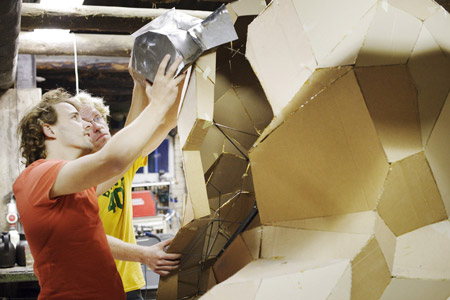
Baas is the fifth designer to receive the award, following the Campana Brothers last year, Tokujin Yoshioka in 2007, Marc Newson in 2006 and Zaha Hadid in 2005.
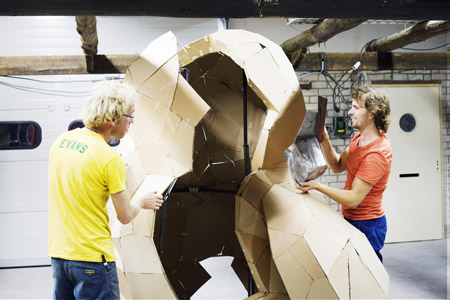
These photos show Baas and business partner Bas den Herder working on designs for the show, watched closely by Design Miami/ director Ambra Medda (below).
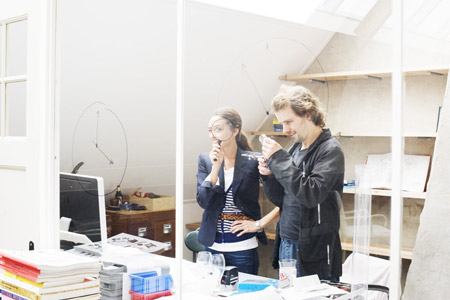
More Dezeen stories about Maarten Baas:
Analogue Digital Clock
Sweeper Clock
Dezeen's Milan favourites
Maarten Baas at Contrasts Gallery
Maarten Baas at Via Voghera 8 (Milan 2008)
The Chankley Bore for Established & Sons
New work for Established & Sons
New work at Milan 2008
Wind
Maarten Baas at Carpenters Workshop Gallery (movie)
Smoke
More Maarten Baas in Milan 2007
Maarten Baas in Milan 2007
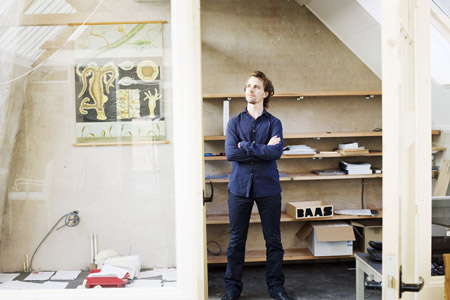
Here's more info from Design Miami/:
--
Design Miami/ presents Designer of the Year Award to Maarten Baas
Design Miami/, the pre-eminent international fair for limited edition design, is proud to present Dutch designer Maarten Baas as this year’s winner of the Designer of the Year Award. New work, commissioned for the award, along with a retrospective of Baas’s work, will be presented at the December edition of Design Miami/.
Each December, the prestigious Award is presented to a designer who has made a significant contribution to the progression of design. The Designer of the Year must demonstrate a long history of consistent work, as well as outstanding work created within the last twelve months. Now in its fifth year, the Award has gone to an impressive list of esteemed designers, including Zaha Hadid, Marc Newson, Tokujin Yoshioka and the Campana Brothers.
At only 31 years of age, Maarten Baas is a strikingly young designer who has impacted the world of design in an unprecented short period of time. “The decision to give the award to someone as young as Baas might seem controversial, but he has already changed the course of design history,” Design Miami/ Associate Director Wava Carpenter comments. “His work has transformed the way collectors understand the landscape of contemporary design and has opened the market to a younger generation of designers. Baas pioneered the way with his first collection Smoke, his graduation project which became an international design sensation through his collaboration with New York gallerist Murray Moss.”
Design Miami/ Director Ambra Medda adds. “He has allowed more people to accept and respect young design. But he is also a truly phenomenal talent who has all the qualities of a great designer and whose work is consistently strong and varied. He has a great sense of imagination and trusts himself to explore his ideas to the maximum, constantly evolving while anchoring his work in a craft-oriented approach. He has kept the design community gripped, like a good movie where you can’t take your eyes off the screen, where each project is like one excellent scene after another.”
With this award, Design Miami/ is recognizing the unique vision embodied in Baas’s work, in which concepts and forms evolve organically through the special world in which the pieces are created. Baas’s studio is located on a remote farm in Holland, which is populated and worked by an interesting cast of characters – a talented and diverse community, with each member contributing to the final products. Surrounded by peacocks, cows, discarded car parts, architectural remnants, and any number of cast off commercial goods, the team work together to fulfil Baas’s vision, seriously experimenting with materials and taking inspiration from their rich surroundings. Baas demonstrates again and again his extraordinary capacity to generate radically new ideas, constantly rethinking and reinventing design processes to mesmerising effect.
In keeping with Design Miami/ tradition, Baas will be creating an installation at this year’s fair. Instead of offering a straightforward overview of his work, Baas has decided to design a theatrical environment where his past work will be mingled with other items from his mental travels, from items found in the street, to product samples, to other designers’ work. The overall atmosphere takes inspiration from “Cabinets of Curiosities”, Dutch rooms which display the collections of Grand Tour travellers from the past who brought back objects of interest, such as geological formations, ancient coins, statuary and other fascinating discoveries. “The objects are often presented in mysterious ways, where it’s not entirely clear what they are or what they mean,” Baas comments. “I think this is a fitting approach to looking at my work.” In addition to inanimate objects, Baas will also include live actors in the installation.
Baas’ installation will also show for the first time examples from an entirely new series of work, created expressly for the Design Miami/ Designer of the Year Award. This new collection will include a series of cabinets fabricated in metal, with irregular shapes of steel welded together to form a shell surrounding a rich and refined interior. Like Baas’s previous work, the new cabinets will give an animated impression, “like abstract monsters behaving like cabinets” explains Medda. In addition, Baas will launch a new addition to his Real Time project, which has been created for the Zuiderzee Museum.
About Maarten Baas
Maarten Baas was born in 1978 and grew up in the Netherlands, where he studied at the Design Academy Eindhoven. Already while studying, one of his projects, a candle holder called Knuckle, was taken into production. He made design headlines with one of his 2002 graduation projects, a series of charred furniture called Smoke, which was subsequently further developed in collaboration with New York gallerist Murray Moss. Iconic and controversial creations within this series include a charred 1934 Steinway grand piano created for Murray Moss, and the charring of an entire suite of antique furniture from the Groninger Museum’s permanent collection for its exhibition ‘Nocturnal Emissions’.
In 2005 he began collaborating with Bas den Herder who is now responsible for the production of all his works. All of Baas’s items are uniquely hand made by Baas and his team of ten assistants.
Baas focuses on creating one new project a year, each time exploring new ideas and media. Highlights include his Hey, chair, be a bookshelf! collection, in which he combined discarded furniture elements into complex structures with entirely new purposes; his Clay Furniture series, in which each piece is modelled by hand from synthetic clay; or his Sculpt collection in which items of furniture are based on quick sketches which are then enlarged and literally translated into finished pieces on a monumental scale.
“I only do things if I think they can make sense,” Baas explains of his approach. “I always want to know how I can take things one step further.”
A signature approach of his is to experiment with a wide variety of materials, applying new techniques that haven’t been tried before, such as his Plastic Chair in Wood series, which evolved out of a collaboration with Contrasts Gallery in Shanghai, in which Baas was commissioned to work with traditional Chinese producers. The Plastic Chair in Wood is in fact hand-carved out of wood, while taking the form of a factory mass-produced plastic chair. His Real Time project, launched this year, involved creating 12 hours worth of high definition film; “it was a really difficult technical challenge,” Baas comments, “since I had no background in film and had to work out how to present so much material in a way that could work on a Bluray player.”
Baas refuses to be categorised; “I don’t really want to give things a name, explanation or description.” He says. “Categories are not relevant as far as I’m concerned. I make what I want to make.” Equally he takes the same approach when he looks at other designers’ work. “I don’t need to know the why or how – it’s important to be simply able to look at a work and see that it’s good on its own terms.”